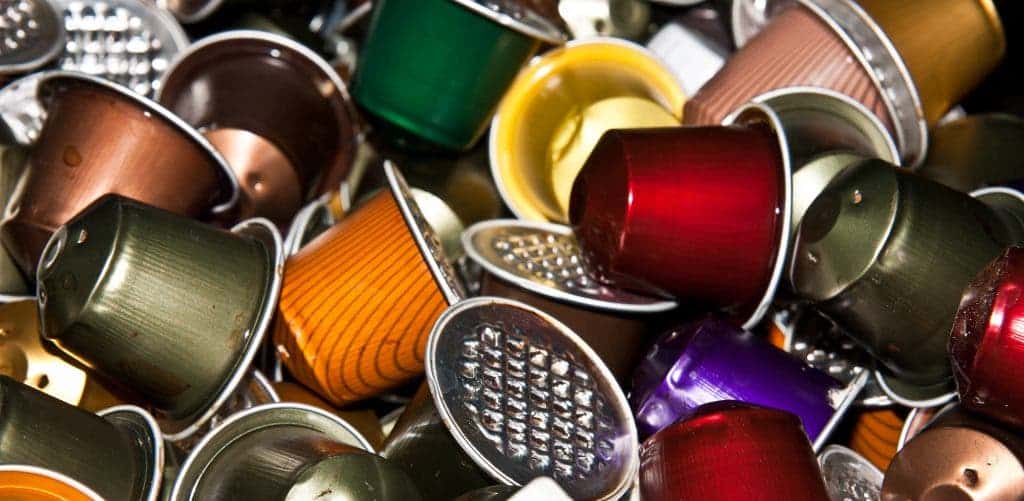They may not look like much, but coffee pods are a big problem. According to Science Alert, if you collected all the single-use coffee pods sold by market leader Keurig in a year and lined them up end-to-end, you’d have enough to circle the globe 12 times over. That’s a lot of waste, and to make matters even worse, these pods are extremely difficult to recycle because they are built from a mixture of plastic and aluminium, which most recycling plants can’t deal with. The city of Hamburg has taken a strong stance against coffee pods, banning them in all state-run buildings.
Almost one in three American homes now has a pod-based coffee machine, while 13% of all Germans drink a coffee made from a single-cup brewer every single day. Last year K-Cups accounted for most of Keurig Green Mountain’s $4.7 billion in revenue, growing by 500% in a mere five years. Nespresso, another major player in the market sold more than 27 billion of its sleek aluminum capsules worldwide in 2012. With this growth came a lot of non-recyclable junk. As of 2014, only five percent of the pods made by Keurig were recyclable, and not much is changing in that aspect.
“These portion packs cause unnecessary resource consumption and waste generation, and often contain polluting aluminium,” Jan Dube from the Hamburg Department of the Environment and Energy told the press over the weekend.
“The capsules can’t be recycled easily because they are often made of a mixture of plastic and aluminium. It’s 6 grams of coffee in 3 grams of packaging. We in Hamburg thought that these shouldn’t be bought with taxpayers’ money.”
The move didn’t come out of the blue. Hamburg has a long list of things it wants to do to to become a truly green city in the future. Among other things, Hamburg wants to become car-free in 20 years and build green spaces above noisy highways.










